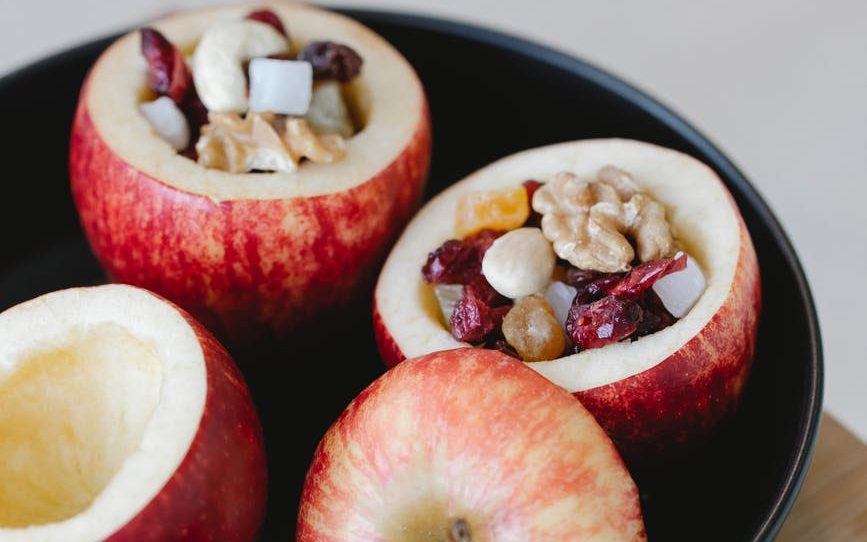One of the main ways to manage histamine intolerance is to consume a low histamine diet. At times, this can be quite restrictive. There can be whole food groups that are avoided due to the impact that it has on the body and histamine. Also as our digestive system is usually one of the root causes of histamine intolerance, we are not absorbing nutrients very well either!
So how can you ensure that you don’t end up with nutrient deficiencies and histamine intolerance?
Firstly, being aware is the number one thing. Looking out for signs and symptoms of these deficiencies and address them accordingly. Secondly, eating a variety of foods is also important. This ensures adequate nutrient intake from alternative sources.
Thirdly, working with a qualified practitioner to help guide you on the right path. They can work out a personalised plan taking into consideration histamine intolerance.
In this blog, we will discuss the most common nutrient deficiencies and histamine intolerance.
If you already follow a low histamine diet, you know that it can be quite restrictive. Some foods that are typically high in histamines are:
- Citrus fruits
- Fermented foods
- Smoked or processed meats
For a comprehensive list of low histamine foods – Click here.
As mentioned above, histamine is found in many food groups. When being disciplined and avoiding the foods high in histamine, in the long term you may not be getting the variety of nutrients required in the diet. Also not getting the nutrients your body needs to cope with the underlying cause of your histamine intolerance.
Some of the nutrients to be aware of are:
Vitamin B6. Iron, Magnesium, Zinc, and a lesser-known one, Iodine.
Let’s look at these in more detail, their particular functions, and food sources.
Vitamin B6
Vitamin B6 plays a vital role in the function of over 100 enzymes that catalyze essential chemical reactions in the human body. B6 is also important as it is used in the breakdown of histamine in the body.
Including:
- Nervous system function
- Hemoglobin synthesis and function
- Tryptophan metabolism
- Hormone function
- Nucleic acid synthesis
- Histamine metabolism
Food sources of Vitamin B6 include:
- Salmon (H, HL)
- Potato
- Avocado (H, HL)
- Turkey – low histamine only if it is fresh or frozen
- Chicken – low histamine only if it is fresh or frozen
- Spinach (H)
- Banana. ( Ripe banana H, A)
- Dried plums (HL)
- Hazelnuts, dry roasted (HL, A???)
*(H) – High Histamine containing foods, (HL) Histamine liberating foods, (A) food containing amines
As you can see almost all of the list contains high histamine-containing foods.
Low Histamine Vitamin B6 options:
- Potato
- Carrots
- Sunflower seeds (A)

Iron
Iron is needed to make hemoglobin, a protein in red blood cells that carries oxygen from the lungs to all parts of the body. Also myoglobin, a protein that provides oxygen to muscles.
Iron is found primarily in the following foods:
- Beef (H)
- Chicken, liver (H)
- Oysters (H)
- Clams (H)
- Tuna (H)
- Mussels (H)
- Prune juice (H)
- Prunes (H)
- Potato
- Quinoa
- Spinach (H)
- Swiss chard
- Beans, white (HL)
- Lentils (red lentils – low to moderate histamine)
- Tofu (H)
- Hazelnuts (H)
- Cashews (H)
*(H) – High Histamine containing foods, (HL) Histamine liberating foods, (A) food containing amines
Once again, many of the food sources of iron are also high histamine-containing foods.
Low Histamine Iron options:
- Lamb
- Swiss chard
- Mustard greens
- Potato
- Quinoa
- Chia seeds
- Pumpkin seeds
Zinc
Zinc is needed for the body’s Immune system to properly work. It plays a role in cell division, cell growth, wound healing, and the breakdown of carbohydrates.
Zinc containing foods are:
- Oysters (H)
- Beef (H)
- Crab (H)
- Turkey (only low histamine if fresh or frozen)
- Pork (only low histamine if fresh or frozen)
- Soybeans (HL)
- Chicken (only low histamine if fresh or frozen)
- Pine nuts (A)
- Cashews (A)
- Yoghurt, plain (H)
- Sunflower kernels
- Pecans (A)
- Brazil nuts
- Chickpeas (HL)
- Cheese (H)
- Almonds (A)
Similarly, with zinc a lot of the food sources of zinc are also high in histamine.
Low Histamine Zinc options:
- Hemp seeds
- Asparagus
- Mushrooms – moderate histamine
- Pumpkin seeds
- Sunflower seeds
Magnesium

Magnesium is needed for over 200 biochemical reactions in the body. It helps to maintain normal nerve and muscle function, supports a healthy immune system, keeps the heartbeat steady, and helps bones remain strong. It also helps adjust blood glucose levels.
Magnesium containing foods:
- Brazil nuts
- Brown rice
- Cashews (A)
- Mackerel (H)
- Spinach (H)
- Almonds (A)
- Swiss chard
- Lima beans (HL)
- Avocado (H)
- Peanuts (A)
- Hazelnuts (H)
- Chickpeas (HL)
- Banana (ripe is H)
- Chocolate (H)
As you can see the list of high magnesium-containing foods is also high histamines or histamine liberating foods too. Hence why finding other sources of magnesium that are also low in histamine is important.
Low Histamine Magnesium options:
- Brazil nuts
- Brown rice
- Chia seeds
- Dragonfruit
- Hemp seeds
- Pumpkin seeds
- Quinoa
- Swiss chard
Iodine
Iodine is required to make thyroid hormones. These hormones control the body’s metabolism and many other important functions. It also impacts energy and hair growth!
Foods high in iodine:
- Salt (iodized)
- Cod (H)
- Shrimp (H)
- Fish sticks (H)
- Tuna (H)
- Egg (whites -HL)
- Navy Beans (HL)
- Potato with peel, baked
- Turkey breast, baked (Low histamine as long as fresh or frozen)
- Seaweed (H)
- Strawberries (H)
Similar to the other nutrients, the list of iodine-rich foods are also high in histamine.
Low Histamine Iodine options:
- Potato, peel baked
- Turkey breast, baked (Low histamine as long as fresh or frozen)
- Cranberries
- Fennel
- Broccoli
While a low histamine diet is important to improving your histamine intolerance also, ensuring that you eat a wide range of foods on the improved lists is important to ensure adequate nutrient intake. This also helps to heal our gut, as eating a wide range of different foods ensures a healthy microbiome.
With nutrient deficiencies and Histamine Intolerance, it’s particularly Vitamin B6, Iron, Zinc, Magnesium, and Iodine to look out for as these are required for many vital functions in the body. Ensuring that you get an adequate intake of these vitamins can be trickier on a low histamine diet. Including the low histamine alternatives for these nutrients and supplementing where necessary is key to avoiding any deficiencies that can slow down your healing and increase your symptoms.
Warmest Wishes!
Luanne

Do you want to learn how to eat an anti-inflammatory, gut-healing, low-histamine diet the right way?
With easy recipes, meal plans, handouts, and everything you need in a self-paced course – start the Easy Low Histamine Diet Kickstart course today.
Reduce your symptoms with delicious food and eat with ease.

 HWH method application
HWH method application